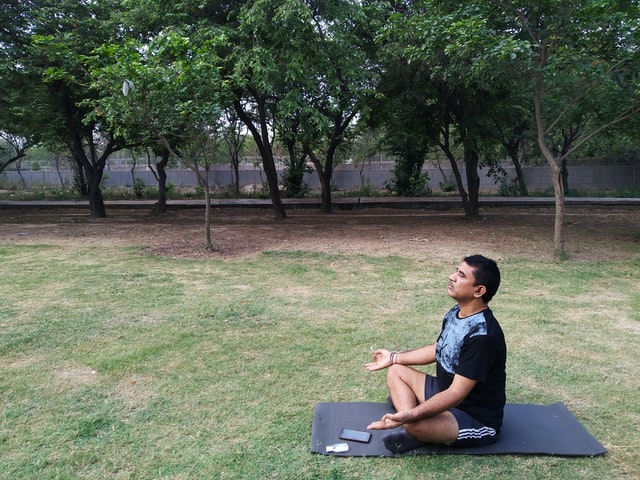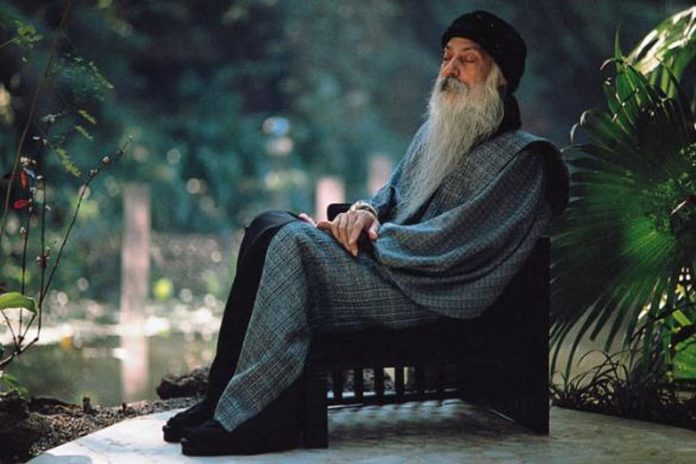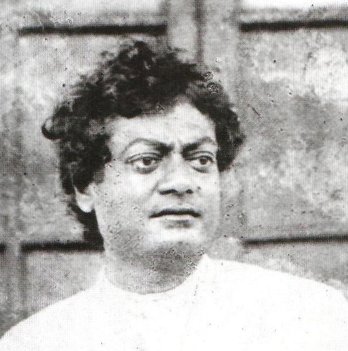to meditate or not to

Meditation commands tremendous amount of trust and respect worldwide, its popularity has been consistently growing and now even governments, clinicians and scientists relate to it. Objective of this article is to look its relevance from analytical point of view.
Three Dimensions of Meditation
Word meditation has French and Latin roots and is derived from a verb meditari meaning ‘to think, contemplate, devise or ponder’. With amalgamation of eastern dhyan its perspective broadened, and it looks like having 3 dimensions:
1st Dimension : To deeply focus on something
2nd Dimension : To disengage with one’s own thoughts
3rd Dimension: To feel synergy, coherence, flow or rhythm
Besides many others, Buddha, Mahaveer and Osho are known to have contributed a lot towards inventing techniques for meditation. And with this there has been a great amount of shift from French or Latin meditatri i.e. to think, to eastern Samadhi i.e. purity of being. Question is – are techniques really effective in taking from 1st dimension to 3rd dimension?
Why is flow, synergy or rhythm needed?
Before working on can techniques take to 3rd dimension let’s question – why is it needed in the first place? Why is there so much craving to feel flow, coherence, synergy or rhythm, deep at the core, at cellular or molecular level, and what is it?
What is it? It is probably a state when mind and body are aligned, and so are the cells, molecules, energies and endocrine and other biochemical processes within. And when it is there, mind has a happy feeling. Since this synergy is pro-life, all living beings look for it. Why humans look for it the most? Because humans have lost it the most. All other animals, when in wild, i.e. in their natural habitat, mostly have it all the time. Animals, when in wild, are always focused, coherent and in synergy and flow, this way they are always in a meditative state.
Why are we so fragmented?
Basic reason of our fragmentation is our separation from nature at one hand, and split of body and mind at the other. This is where we have lost the coherence, and this is why we feel so coherent when in wild. We broke away from the nature and have split our body and mind in into separate entities; and then, we have further divided them, particularly the mind, in several pieces. This way we are in many pieces, many masks, many identities. This fragmentation happened more to intellectuals or Brahmins and less to peasant like people e.g. nomadics, hunters, shepherds, farmers and artisans. And this why intellectuals crave for it so much, and peasants so less.
How things could be put together back?
There is a basic design difference in plants and animals, plants are designed to stay at one place their whole life, and animals to keep moving. Motion is the basic difference. Our physiology is designed for motion, and when we are in motion a substance called ‘serotonin’ is released. This substance has many functions. To begin with it’s a neurotransmitter, so it helps think clearly. Basic reason why nervous system exits, is motion. Sea squirts begin their life as moving creatures and later get attached to a rock to never ever move for rest of their life, and as a consequence, they eat away their own brain. When one isn’t moving, biologically speaking - brain becomes redundant. Humans have all the time been enhancing their speed and reducing the movements. Currently, most humans live sedentary life, sitting at one place most of the time, be it school, work, home or travel.
Serotonin is also known as feel-good hormone as it brings sense of reward. It is also precursor to a substance called melatonin, which acts as sleep hormone. One can never have enough of melatonin without having enough of serotonin. Sense of reward and sleep are vital in recharging organisms for motion.
To defrag ourselves we got to put things together back – body and mind, humans and nature. Only way to put body and mind together is through physicality or motion. We got to live in our whole body and stop thinking brain is me and rest of the body is housing or transportation for the brain. Doing things physically puts body and mind together. But it has to be a selfish, willful act; forced physicality doesn’t bring them in coherence.
Second defrag has to happen by realizing the fact that there is no life in isolation, and our body isn’t merely a bunch of human cells. Our body has around 1 trillion human cells and carry 4 to 10 trillion germ cells depending upon one’s health, healthier people have more germs. We cannot survive merely as human cells. It’s a single life process flowing in all species, extinction of one species affect survival of others. We humans have systematically been forcing other species go extinct. We got to go back to the nature and get integrated.
Can mediation bring defrag, flow or rhythm?
Most meditations are mind act done in sitting posture. This sitting posture could have helped people in the past when humans were physically active, now most of us are otherwise also sitting whole day; and hence, it looks least likely that this would bring defrag, flow or rhythm.
What is the overall effectiveness of meditation techniques?
Meditation could certainly be effective in focusing on something i.e. in its 1st dimension. It is also likely being effective in 2nd dimension i.e. in disengaging with one’s thoughts. And disengaging with thoughts could help in two ways – 1) it may reduce fragmentation within the mind, 2) many sufferings are caused by one’s own thoughts; and hence, disengaging with them is likely bring calm. And this is why to begin with mediation helps to almost everyone. However, its ability to reach to 3rd dimension is shadowed, and since this is the deepest quest, in later stages meditation becomes ineffective to the most. Only few, whose ultimate interest remain limited to 1st and 2nd dimensions, keep benefiting in long run.
Can meditation harm?
It may look an absurd question, but there are 3 concerns with meditation:
- Mechanicality: Soon after initial excitement is over most techniques become mechanical and forced, and forced and mechanical things eventually bring more fragmentation.
- Sedentarity: To people living sedentary life addition of any more-mind and less-body activity accelerates health deterioration. It's well recognized sitting is the new smoking and this is why most heavy mediators suffer from ailments like diabetes, spondylitis, migraine, cardiac issues, etc. In diabetic mediators we have discovered that exchanging meditation with some real physical work like brooming or mopping tremendously help regulate blood glucose. It is strongly recommended that those into sedentary meditation must increase their physical activities to counter the deleterious effect of the former. Eventually many gurus are realizing this phenomenon and are incorporating pre-meditation physical exercises. This became particularly popular subsequent to Osho’s dynamic meditation technique.
- Pseudo sense: Third and the biggest problem with meditation is trap of pseudo-sense-of-well-being. Because of a kind of pious spiritual aura around meditation most people get trapped into it, it becomes particularly harmful to the people who get hooked to manufactured experiences and well-being.
Let’s run this analysis through some meditation stalwarts

Yuval is one of the most sensation thinkers of our time. He has been writing bestsellers in a row. He meditates for a couple of hours every day and for at least a month in a year whole day and finds meditation being his most important neuro-nutrition helping him think clearly. An Oxford scholar, Yuval is professor of history at Jerusalem University and practices SN Goenka promoted Vipassana meditation. I’m myself one among his millions of admirers. He attributes phenomenal success of Sapiens (sold over 12 million copies in over 50 languages) to marketing abilities of his husband. The original version of Sapiens From Animals Into Gods: A Brief History of Humankind that Yuval self-published was sold just few thousand copies. Vipassana is particularly designed to achieve the 2nd dimensional effect, and it is through this that he is excelling in 1st .

Nobody ever succeeded like Osho in selling meditation and enlightenment. In a short span of time he became a worldwide phenomenon; however, he suffered from bad health and died young (58). He lived extreme indoor and sedentary life full of luxuries. He himself was more into the 1st dimension of meditation i.e. deep thinking; however, he tried putting his disciples into the 2nd with an illusion of bringing them in 3rd.

One of the greatest Yogis of 19th century Swami Vivekananda was deep into meditation. Sitting for 3 hours or more was something quite usual for him on a daily basis. He suffered from over 30 ailments including diabetes, insomnia, liver and kidney diseases, migraine and heart diseases and died at a very young age of 39.
